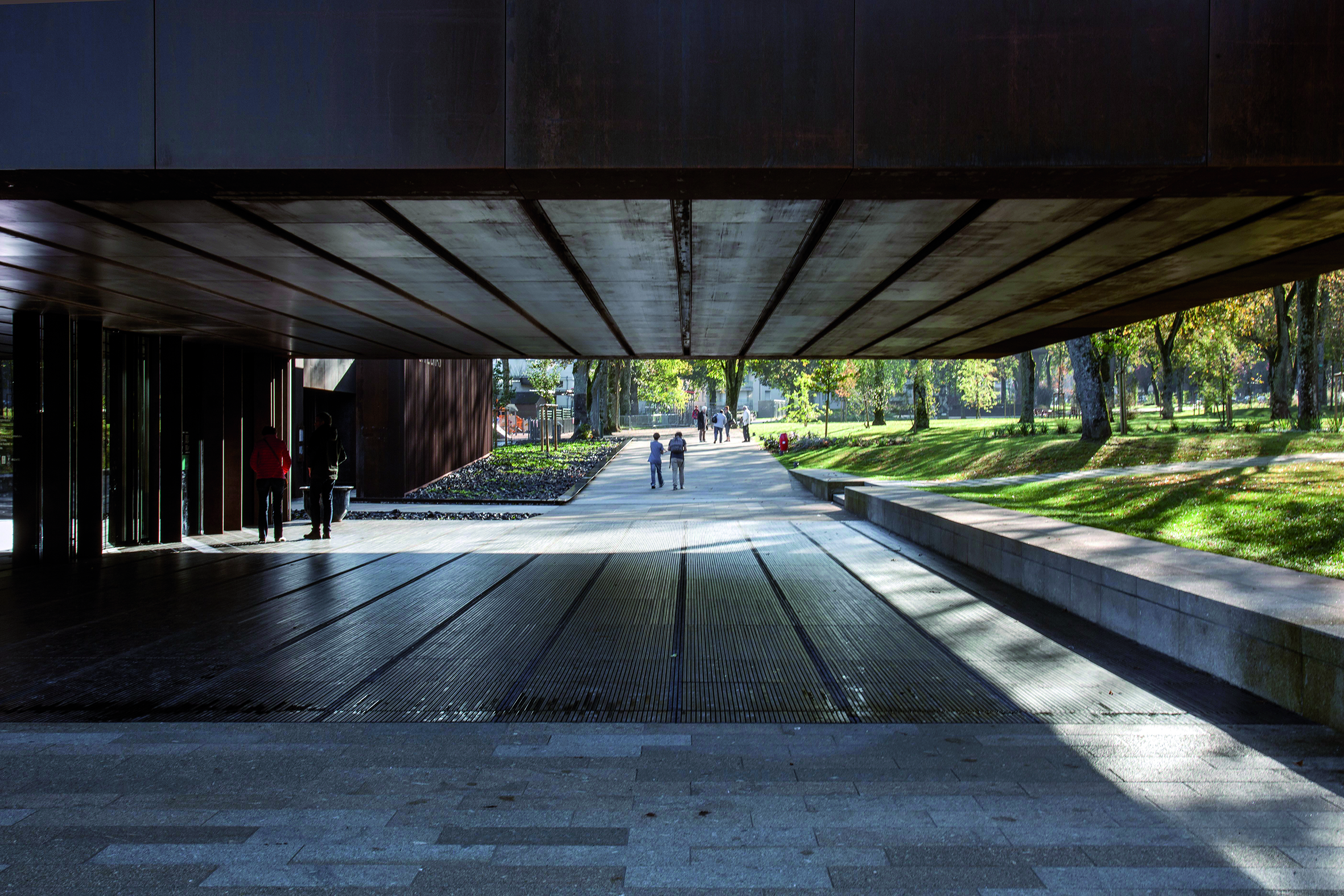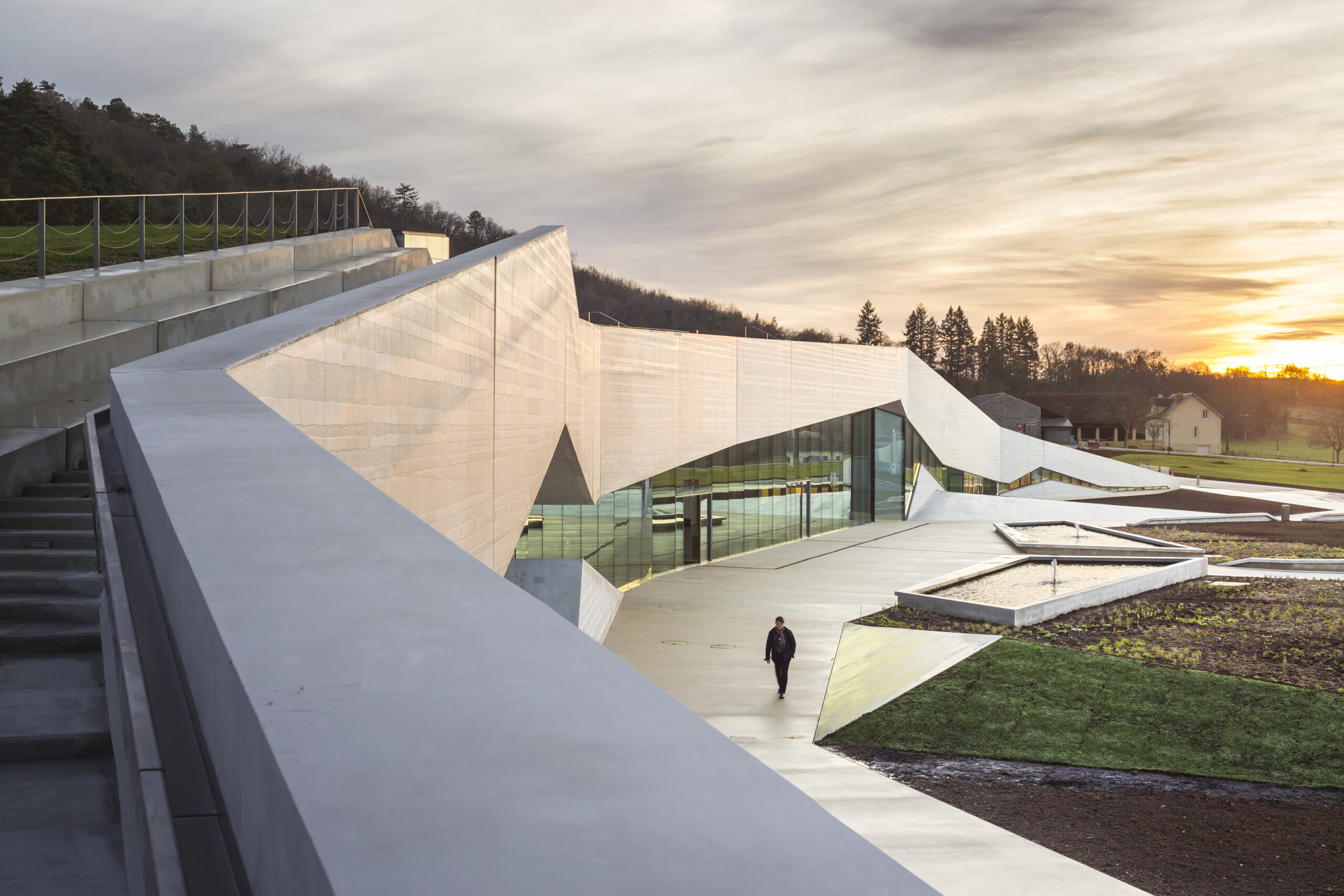The countdown to 13th Annual A+Awards winners' announcement has begun! Stay updated by subscribing to Architizer's Awards Newsletter.
Architecture and landscape mirror one another. Each practice curates an assembly of materials, ideas, light and form to bring concepts to life. At the heart of landscape architecture is a deep appreciation for process and time. While architects may seem focused on the final building or product, both disciplines are innately tied to human experience. That’s where the intersections of the two practices meet: how we move through space, our views in and out, and what it feels like to connect to the surrounding context and each other.
Museums are cornerstones of culture. They combine history and context with material expression to guide a visitor’s journey. The following museum designs explore the human experience and the intersections where landscape and architecture meet. Featuring galleries and exhibition spaces, the designs are programmatically and spatially diverse. Showcasing multiple scales, they are spaces for discovery and exploration.
Soulages Museum
By RCR Arquitectes, Rodez, France


As RCR explains, “museum and landscape thus have a mutual feedback, merging into one, like the painter and his work, displaying a wealth of relationships where nothing can be removed, because everything that belongs to this new created world is inherent.” Their hope was that the painters work, the architecture of the museum, and the landscape the project calls home would all speak to one another.
Lascaux IV
By Snøhetta, Montignac, France
As the team explains, Lascaux IV is created as a fissure in the landscape. The roof features a gentle broken line, echoing the hill’s undulating form. Across its length, the façade ranges from transparent to opaque, maintaining an inseparable relationship with the exterior, offering hints of what is contained within. Lascaux IV is placed in a transitional zone between untouched forest and agricultural land. By using the exact border that does not belong to either of these two vastly different landscapes, the architecture aims to be a contribution to the location and landscape, facilitating a dialogue between the two contrasting landscapes.
Glenstone Museum Expansion
By Thomas Phifer and Partners and PWP Landscape Architecture, Potomac, MD, United States
For the team, the integration of architecture with landscape, and both with art, is key to the experience of Glenstone. “We considered the landscape as the inspiration,” Thomas Phifer explains. “The visitor’s arrival is choreographed through the trees and open fields, heightening your experience with the land and revealing the subtle qualities of the site. From your first moments at Glenstone you experience a place with few distractions, and your mind and soul prepare for an intimate encounter with art.”
Crystal Bridges Museum of American Art
By Safdie Architects, Bentonville, AR, United States
As the team notes, the museum is entered from the crest of the hill, with a dramatic overview of the entire complex. From the parking and drop-off, one descends by stair or elevator to the pond level. The public then circulates from one museum pavilion to the other, circling and crossing the ponds with open vistas all around. Two bridge-like structures are constructed across the ravine, forming large ponds, with a difference of 12 feet in height, retaining the northbound flow of water. In all, the museum is comprised of eight pavilions, three of which abut the ponds and are sited so that they retain the hillside.
Seattle Art Museum: Olympic Sculpture Park
By WEISS/MANFREDI, Seattle, WA, United States
The goal was to capitalize on views of the skyline and Elliot Bay while rising over the existing infrastructure to reconnect the urban core to the revitalized waterfront. A key component of the project is an exhibition pavilion that provides space for art, performances and educational programming. From this pavilion, the pedestrian route descends to the water, linking three new archetypal landscapes of the northwest: a dense temperate evergreen forest, a deciduous forest and a shoreline garden. The design not only brings sculpture outside of the museum walls, but it brings the “park itself into the landscape of the city.”
Moesgaard Museum
By Henning Larsen, Aarhus, Denmark
The rectangular shaped roof plane seems to grow out of the landscape, and during summer, it will form an area for picnics, barbecues, lectures and traditional Midsummer Day’s bonfires. Atop the project, visitors can enjoy views of the Aarhus Bay through large glass walls, while the interior was designed like a varied terraced landscape inspired by archaeological excavations.
TIRPITZ
By BIG – Bjarke Ingels Group and Tinker Imagineers, Blåvand, Denmark
As the team explains, visitors will first see the bunker until they approach through the “heath-lined pathways and find the walls cut into the dunes from all sides and descend to meet in a central clearing.” The courtyard allows access into the four underground gallery spaces carved into the sand. The new TIRPITZ is a sharp contrast to the former concrete monolith by camouflaging with the landscape and inviting lightness and openness into the new museum.
Amos Rex Museum
By JKMM Architects, Helsinki, Finland
The domes contain skylights that introduce natural light into the galleries below as well as selected views of life above. At street level, a new urban square has been created with its own identity. The domes form an undulating landscape for people to enjoy, while the Lasipalatsi building was restored respecting its valuable 1930´s Functionalist era interiors and details.
The countdown to 13th Annual A+Awards winners' announcement has begun! Stay updated by subscribing to Architizer's Awards Newsletter.
